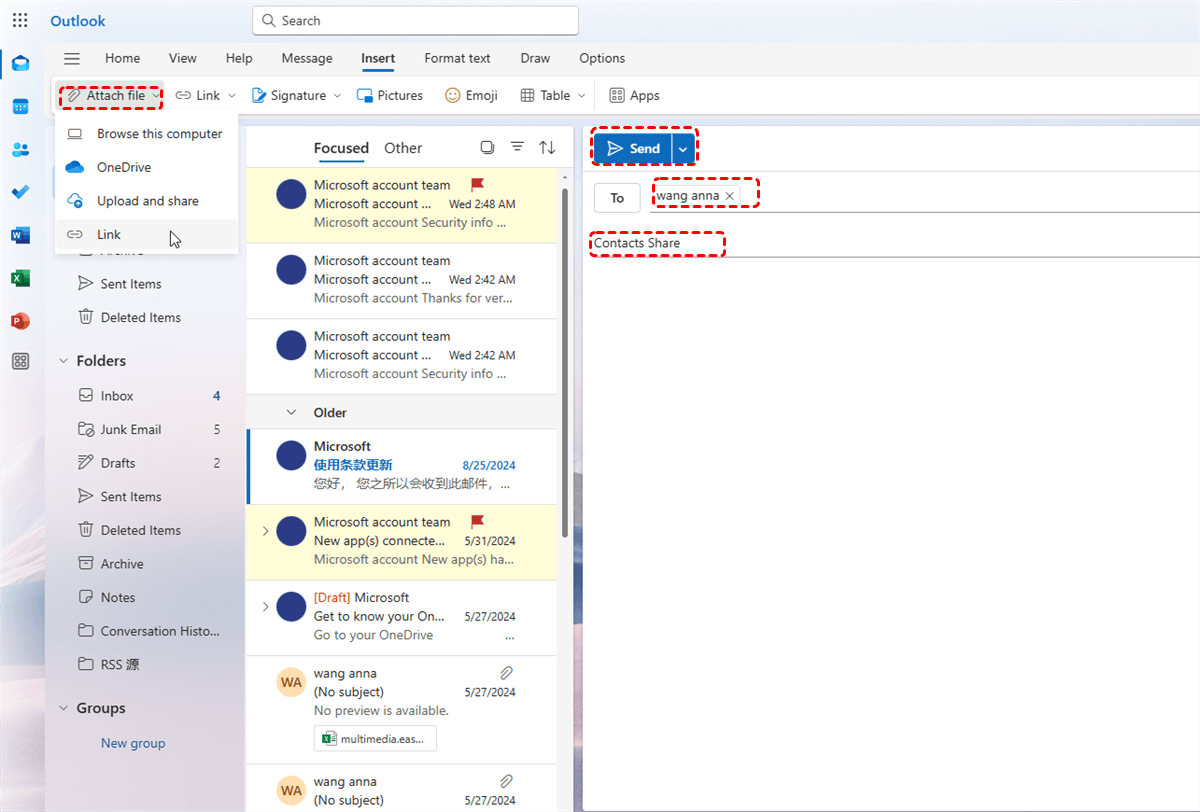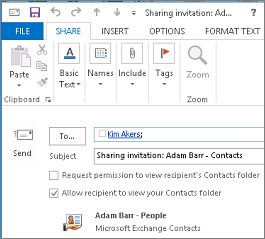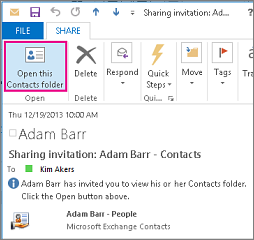Why Sharing Contact Groups in Outlook is Important
Contact groups, also known as distribution lists, are a powerful tool in Outlook to streamline communication with a specific group of people. By sharing contact groups, you can:
- Enhance Collaboration: Share contact groups with colleagues to facilitate team projects and communication. This can be especially useful for project teams, departments, or specific workgroups.
- Simplify Emailing: Easily send emails to a specific group of people with a single click. This saves time and effort, especially when you need to send the same message to multiple recipients.
- Centralize Contact Information: Maintain a centralized repository of contact information for easy reference and updates. This ensures consistency and accuracy across your organization.
- Improve Efficiency: By sharing contact groups, you can automate tasks and workflows, such as sending mass emails or scheduling meetings.
Overview of Methods to Share Contact Groups in Outlook
There are primarily two methods to share contact groups in Outlook:
- Forwarding as an Attachment: You can forward the contact group as an attachment to an email. This method is suitable for sharing with individuals or small groups.
- Sharing via Email: You can share the contact group with a larger group of people by sending an email with the contact group attached. This method is ideal for sharing contact groups with teams or departments.
How to Share Contact Group in Outlook
Before sharing your contact group, ensure it's well-organized and up-to-date.
- Review and Update: Check for any outdated or incorrect contact information, such as phone numbers, email addresses, or job titles.
- Organize Contacts: Consider organizing contacts into subgroups within the main contact group for better management. This can help you create more specific and targeted contact groups.
- Verify Permissions: Ensure that you have the necessary permissions to share the contact group. If the contact group is part of a shared mailbox or a shared calendar, you may need additional permissions to share it.
Using the "Forward as Attachment" Option
Step 1. Export the Contact Group: Open Outlook, click "File" tab- > "Open & Export"- > "Import / Export" and follow the wizard to export the target contact into CSV file.
Step 2. Create a New Email: Compose a new, input the recipient address, write the subject and attach the contact CSV file.
Step 3. Click on "Send": If everything is done, click "Send" button on the top of "To" box.
Sharing via Email
Step 1. Open the Contact Group: Open Outlook. Click the "People icon" in the far left menu, and select the contact folder that you want to share.
Step 2. Choose "Share Contacts": Click Home. Then, in the Share group, click Share Contacts.
Step 3. Create a New Email: Select the "To" box and search the name of the recipient for your sharing-invitation message.
Step 4. Send the Email: Input any infomation you want to include in the message and click on "Send".
Step 5. Confirm: Review the confirmation dialog box and, if correct, click Yes.
When the person receives the sharing invitation in email, he or she can click Open this Contacts folder to check the contacts.
Bonus Tip: How to Manage and Back Up Outlook Emails
This article demonstrates “how to share contact group in Outlook”. If you’re considering backing up your Outlook, MultCloud can be extremely useful. Trusted by over 3 million users, MultCloud is a multi-cloud management tool that facilitates the transfer or synchronization of files between various cloud services.
For instance, you can save your Outlook emails as PDFs to your computer or cloud drives, such as Google Drive, OneDrive, or Dropbox, in bulk. MultCloud also enables you to access and manage all your cloud or Email accounts via a single application. Currently, it supports more than 30 different cloud services, including Google Drive, OneDrive, Dropbox, Box, Google Photos, iCloud Photos, FTP, WebDav, and more.

- Cloud Transfer: MultCloud can transfer files from one cloud service to another directly without downloading and re-uploading.
- Cloud Sync: With MultCloud, you can easily sync two folders between different cloud services in real-time.
- Cloud Backup: You can backup and restore data between different cloud services automatically.
- Instagram Downloader: MultCloud can help you download Instagram videos, photos, reels and stories to local device or remotely upload them to your clouds.
- Email Migration: You can directly back up and save Gmail emails as PDFs to your computer or cloud drive in bulk.
- Manage all cloud accounts in one place: Connect all your clouds to MultCloud and you'll find it so easy to access and manage multiple cloud storage files with a single login.
MultCloud Supports Clouds
-
Google Drive
-
Google Workspace
-
OneDrive
-
OneDrive for Business
-
SharePoint
-
Dropbox
-
Dropbox Business
-
MEGA
-
Google Photos
-
iCloud Photos
-
FTP
-
box
-
box for Business
-
pCloud
-
Baidu
-
Flickr
-
HiDrive
-
Yandex
-
NAS
-
WebDAV
-
MediaFire
-
iCloud Drive
-
WEB.DE
-
Evernote
-
Amazon S3
-
Wasabi
-
ownCloud
-
MySQL
-
Egnyte
-
Putio
-
ADrive
-
SugarSync
-
Backblaze
-
CloudMe
-
MyDrive
-
Cubby


